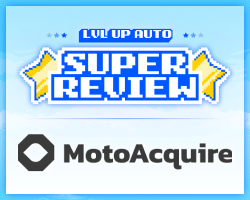It seems like there is a strategy for everything in retail automotive. Technology has introduced new options for procurement, pricing, inventory control and marketing and the knock of e-commerce grows louder each year.
Most of these strategies require a subject matter expert to focus on development, implementation and execution. Even the most prepared dealers can find themselves barely able to stay on the curve much less ahead of it.
As important as these strategies are there is one missing component – people. For a business (dealerships) so focused on people, there is surprisingly very little emphasis on people strategies…
According to the 2015 NADA Dealership Workforce Study, sales turnover increased six points to 72% overall, 80% for non-luxury. Only 33% of sales consultants will reach their three-year anniversary. To put that in perspective, ONLY 1 of 3 sales consultants will be at the dealer when their customers return to buy their next vehicle. With so much effort being put into the customer experience, these statistics should set off alarm bells.
The Problem
So why don’t they? An argument could be made that selling cars is difficult and takes a certain type of person. Knowing this, dealers are willing to sacrifice the mediocre to find the best of the best. After all, becoming a successful sales consultant has a significant financial upside. Very few industries allow the sales rep to control their income the way retail automotive does.
The downside to the financial autonomy is the commitment and sacrifice required to maximize the potential. Retail hours are long, compensation is variable, and the environment is often pressure filled and competitive. Over time the costs begin to outweigh the benefits.
Improving employee retention is a complex problem. Changing pay or reducing hours alone won’t necessarily work and those solutions can be very expensive to implement. Recruiting a different candidate could help, but in order to do that the opportunity must be attractive enough to entice those candidates. Additional training can be impactful but how is training defined? Tactical training such as sales process and word tracks can improve unit measurements but it doesn’t prepare a sales consultant to become a Manager or leader.
The Solution
Human Capital strategy focuses on people, performance and culture of an organization. Similar to the decision of gross versus volume, Human Capital strategy will define how you run your dealership and business. It is a set of principles and guidelines to which all strategic HR activities will adhere to.
The framework covers:
- HR Strategy: Must be in total alignment with operational strategy. This is where core values are defined and upheld.
- Performance Culture: Development of activities that connect performance and culture.
- Measure & Evaluate: Defining measurements to evaluate people-investment decisions.
In addition to the framework, there are 5 activities that define Human Capital:
- Leadership Development
- Performance Management
- Talent Management
- Employee Engagement
- Succession Planning
Like every other strategy, successful execution of Human Capital strategy takes commitment. It is at the top of the Human Resource pyramid. It is filled with gray and more complex than tactical and operational HR. If done well, Human Capital strategy can elevate your business to the next level. It will reduce turnover, create a strong employment brand, improve recruitment efforts and strengthen your culture.
The benefits go beyond just soft metrics. Dealers with a successful Human Capital strategy have lower personnel costs and create a better customer experience.
Start off 2016 by making a strategic investment in the most important component of your business – your people.










